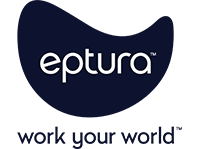
AI is actively reshaping how enterprises manage people, spaces, and assets. Yet, operational leaders face integration and data challenges that can limit adoption.
Employees are increasingly excited about the potential of AI, but to truly benefit, they need to understand how it works, prepare for its impact, and learn how to leverage it effectively. The future of work depends on building an AI-augmented workforce, where people leverage AI-backed workflows to focus less on admin and more on delivering value.
Key takeaways
- AI is an augmentation, not a replacement. Leaders should channel employees; excitement about AI into understanding how it enhances their strengths and creates new opportunities.
- Upskilling is essential. With over half of organizations citing a lack of AI skills as a barrier, structured training and lifelong learning are critical
- Success comes from people using AI as a tool. When people use AI’s predictive power alongside their own creativity, judgment, and empathy, they unlock stronger, more adaptable, and more resilient teams.
What is an AI-augmented workforce?
An AI-augmented workforce is not about automation replacing people. It’s about enhancing human capability with technology.
Eptura’s 2025 Workplace Index reveals that most organizations are still in early stages, using AI for chatbots (70%), dashboards, and diagnostics (54%). But the next wave of AI adoption is already underway — with leaders prioritizing AI for visitor management (68%), predictive maintenance, and occupancy optimization.
This shift gives employees more time for higher-value activities, while leaders gain insights they couldn’t surface manually. The result is a workplace that’s more connected, more informed, and more intelligent.
Key benefits of AI workforce integration
When organizations successfully integrate AI into the workplace, the payoff goes far beyond cost savings. The true value lies in how AI transforms day-to-day operations — making work smarter, faster, and more fulfilling
Increased productivity and creativity
AI eliminates “busy work,” from automating visitor check-ins to recommending desk bookings. According to McKinsey, this has the potential to boost global GDP by up to $13 trillion by 2030. For organizations, that means freeing employees to focus on innovation, collaboration, and creativity.
Improved decision-making
Fragmented data is one of the biggest obstacles today, with 37% of enterprises relying on 11+ employees just to collate and report operational data.
Many organizations still rely on multiple teams, sometimes 10 or more employees, just to pull, collate, and report on operation data from disconnected systems. This process is not only time-consuming but also prone to errors, slowing down leaders’ ability to act on accurate insights.
AI-powered analytics platforms transform reality by unifying data from across the enterprise into a single, trusted souce of truth. Instead of waiting days or weeks for manual reports, leaders can access real-time dashboards that provide clear, actionable insights.
For example,
- An operations director could immediately see which office spaces are underutilized, enabling them ot reassign square footage for higher-value use
- A facilities manager could use predictive maintenance alerts to address equipment issues before they escalate into expensive failures
- Finance leaders can forecast budgets with greater accuracy by analyzing historical patterns alongside live operational data
By replacing manual collation with AI-enabled insights, organizations gain the ability to anticipate space demand, predict asset failures, and optimize costs faster and more precisely.
Enhanced employee skills and growth
Over 58% of organizations cite lack of AI skills as a top barrier.
While leaders recognize the potential of AI to reshape operations, many employees feel unprepared to use these tools effectively. This gap not only slows adoption but can also limit the ROI of technology investments.
Upskilling employees to confidently use AI changes the dynamic. When workers learn how to integrate AI into daily processes, whether that’s interpreting predictive analytics, automating routine reporting, or managing AI-powered workplace tools, they move from being passive users to active drivers of value.
For instance,
- A project manager trained in AI scheduling can optimize resources across teams in real time, improving delivery timelines
- A facility technician who understands predictive maintenance alerts can prevent downtime before it disrupts operations
- Even HR professionals’ benefit by using AI-powered insights to better forecast workforce needs and enhance employee experiences
Beyond immediate productivity gains, building AI literacy strengthens long-term career mobility. Employees develop resilience and adaptability, qualities essential for navigating fast-changing environments.
Leadership priorities for the future of work with AI
Building an AI-augmented workforce isn’t just about installing new technology. It also requires a shift in leadership mindset. Leaders must balance digital transformation with cultural change, helping employees feel empowered by AI.
This means focusing on skills, trust, and adaptability, while modeling the behaviors that encourage innovation and resilience.
Implement upskilling programs
AI adoption fails without skilled people behind the tools. Forward-thinking leaders are embedding training into digital transformation strategies — from workshops on predictive analytics to certifications in AI-enabled facility management.
Think of AI as a high-performance vehicle: without a skilled driver, it goes nowhere.
Promote a culture of continuous learning
AI evolves too quickly for one-time training. Leaders must normalize experimentation, encourage risk-taking, and give employees safe spaces to explore new technologies.
That could mean sponsoring lunch-and-learn sessions, piloting AI-driven booking tools, or sharing success stories across departments.
Use AI as a tool
Employees need reassurance that AI is here to enhance, not replace. Leaders can model this by showing where AI complements human strengths — for example, combining occupancy analytics with human judgment to redesign office layouts, or using predictive maintenance insights to empower technicians to focus on higher-value repairs.

How Eptura AI helps organizations embrace the future of work
One of the biggest challenges organizations face in adopting AI is disconnected systems and data silos, which make it difficult to realize the full potential of intelligent worktech. Eptura addresses this by providing a unified platform that integrates workplace, facility, and asset management — giving leaders the foundation needed for effective AI adoption.
Within that platform, AI capabilities are built to solve the issues leaders encounter most often:
- Occupancy analytics help organizations better manage fluctuating attendance patterns, especially mid-week surges, so space can be used more effectively
- AI-powered booking tools simplify how employees interact with the workplace, improving the overall experience while reducing friction
- Predictive and preventive maintenance supports facility teams by anticipating issues before they happen, reducing downtime and lowering labor costs
- Digital twins and scenario planning give real estate leaders the ability to forecast demand and model different outcomes, helping them make smarter, faster decisions
- Visitor management automation streamlines building access and enhances security, while reducing the administrative burden on staff
Organizations can move from reactive problem-solving to proactive, data-informed decision-making. The result is a workplace that adapts faster, operates more efficiently, and creates better experiences for both employees and leaders.
Create an AI-driven workplace
Leaders who invest in the right AI capabilities, cultivate a culture of learning, and reinforce the value of human creativity will unlock new levels of productivity, adaptability, and innovation.
To learn more, download Eptura’s latest e-book: The importance of AI in the future of work.









